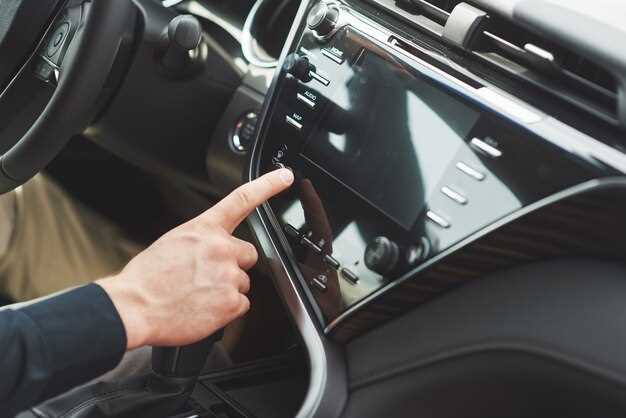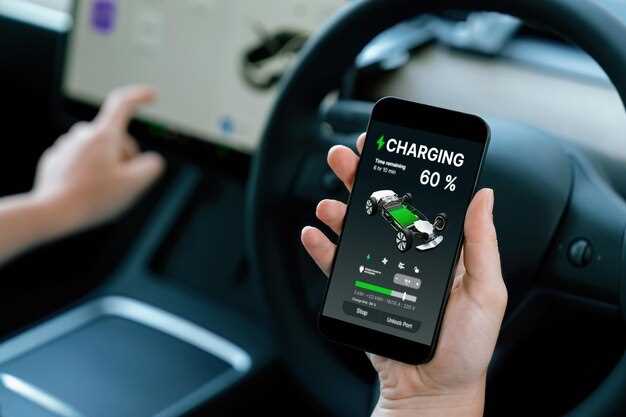
In the rapidly evolving world of automotive technology, choosing a modern car equipped with the right features can significantly enhance your driving experience. With the advent of innovative technologies, the car of today is no longer just a mode of transportation; it has transformed into a sophisticated device that connects seamlessly with our digital lives. As you embark on the journey to find your next vehicle, understanding the essential tech features is crucial.
One of the primary considerations should be connectivity. Modern cars often come with built-in systems that allow for integration with smartphones, enabling drivers to access navigation, music, and hands-free communication easily. Additionally, features like Wi-Fi hotspots and advanced driver-assistance systems are becoming standard, providing not only convenience but also enhancing safety on the road.
Another important aspect to evaluate is the car’s infotainment system. A high-quality multimedia interface can make a significant difference in your driving experience. Look for systems that are user-friendly, offer voice recognition capabilities, and support various apps. Moreover, advanced driver-assistance technologies such as adaptive cruise control, lane-keeping assistance, and parking sensors have become integral, actively contributing to safer and more enjoyable driving.
Advanced Driver Assistance Systems (ADAS) and Safety Technologies

In today’s modern car landscape, Advanced Driver Assistance Systems (ADAS) have become essential components, significantly enhancing safety and driving experience. These tech innovations provide various features aimed at preventing accidents and supporting safer driving practices.
One of the most notable ADAS technologies is Automatic Emergency Braking (AEB). This system detects potential collisions and can apply the brakes automatically if the driver fails to respond in time, significantly reducing the severity of an accident or avoiding it altogether.
Another crucial feature is Lane Keeping Assist (LKA), which uses cameras and sensors to monitor lane markings, gently steering the vehicle back into its lane if it begins to drift. This technology not only enhances safety but also alleviates driver fatigue during long trips.
Adaptive Cruise Control (ACC) represents another advancement in driving tech. Unlike traditional cruise control, ACC adjusts the vehicle’s speed to maintain a safe distance from the vehicle ahead, promoting safer highway driving by reducing the risk of rear-end collisions.
Blind Spot Detection systems enhance awareness by alerting drivers to vehicles in their blind spots, a common area for potential accidents. This safety technology can utilize sensors or cameras to provide visual or audible warnings, helping drivers make safer lane changes.
Furthermore, Rear Cross Traffic Alert assists during reversing by scanning the rear and side for approaching traffic, alerting the driver to obstacles that might not be visible. This is particularly useful in crowded parking lots where visibility is limited.
Integration of tech such as Parking Assistance simplifies the often daunting task of parallel parking. It utilizes sensors to detect parking spaces and can autonomously steer the car into the spot while the driver controls the pedals, making city driving more manageable.
Modern cars equipped with ADAS and safety technologies also often feature comprehensive vehicle stability systems that can detect and mitigate loss of traction, providing enhanced control in adverse weather conditions. These technologies work tirelessly to ensure a secure driving environment.
As automotive tech continues to evolve, the emphasis on safety technologies will only increase. Integrating ADAS in your next car not only ensures compliance with modern safety standards but also brings peace of mind to drivers and passengers alike.
Infotainment Interfaces and Connectivity Options

In today’s modern car landscape, infotainment interfaces and connectivity options have become essential tech features for enhancing the driving experience. These systems allow drivers and passengers to stay connected, entertained, and informed while on the road. A well-designed infotainment interface should be intuitive, providing easy access to navigation, music, and vehicle settings without causing distractions.
Touchscreen displays are the cornerstone of many infotainment systems, offering a user-friendly experience with vibrant graphics and responsive controls. Look for a car that boasts a high-resolution touchscreen with smartphone integration options such as Apple CarPlay and Android Auto. These features enable seamless compatibility with your mobile device, allowing you to utilize apps, manage calls, and access navigation directly through the car’s interface.
Moreover, consider the connectivity options available in your next vehicle. Bluetooth is a must-have for hands-free calling and audio streaming, while USB ports offer convenient ways to charge devices and connect to the infotainment system. For tech-savvy users, wireless connectivity options like Wi-Fi hotspots can transform your car into a mobile office or entertainment hub, providing internet access for all passengers.
Voice recognition technology is another innovative feature worth exploring. Many modern cars come equipped with advanced voice control systems that allow drivers to make commands hands-free, ensuring safety while keeping their focus on the road. Additionally, integration with smart home devices can enable drivers to control home functions, such as lights and thermostats, from their vehicle.
Ultimately, a well-equipped infotainment system enhances the overall functionality of your car, making it a more enjoyable and connected experience. When selecting your next vehicle, prioritize selection criteria that emphasize a superior infotainment interface and diverse connectivity options to suit your modern lifestyle.
Electric and Hybrid Powertrains: What You Need to Know
When considering a new car, understanding the various features of electric and hybrid powertrains is essential. These tech advancements not only contribute to environmental sustainability but also offer unique driving experiences and performance metrics.
Electric vehicles (EVs) are powered entirely by electric motors and rechargeable batteries. One of the most significant benefits of EVs is their efficiency. They convert over 60% of the electrical energy from the grid to power at the wheels, compared to traditional gasoline cars that only convert about 20% of the energy stored in gasoline. Additionally, EVs produce zero tailpipe emissions, making them a cleaner option for urban driving.
Hybrid powertrains combine an internal combustion engine with an electric motor. This design allows the vehicle to switch between power sources or use both simultaneously, leading to improved fuel economy. Hybrids typically offer regenerative braking, which captures energy during braking and uses it to recharge the battery, enhancing efficiency even further.
Another important feature to consider is the range and charging options. EVs may have limited driving range compared to gasoline cars; however, advancements in battery technology are continually increasing efficiency and reducing charging time. Many manufacturers offer fast-charging options that can significantly minimize downtime.
For those who experience range anxiety, plug-in hybrid vehicles (PHEVs) can be an excellent alternative. They operate as electric vehicles for short distances but switch to gasoline for longer trips, providing the best of both worlds.
Furthermore, the availability of charging infrastructure is a critical factor. As more charging stations become accessible in urban and rural areas, the convenience of owning an electric or hybrid vehicle improves. Prospective buyers should also check compatibility with home charging systems for seamless overnight charging.
Finally, consider the long-term savings on fuel and maintenance costs. Electric and hybrid vehicles usually require less maintenance than traditional cars, as they have fewer moving parts and do not require oil changes. Many governments also provide incentives such as tax credits or rebates, further reducing the total cost of ownership.
In conclusion, electric and hybrid powertrains represent a significant shift in the automotive industry. Understanding these features can help you make an informed decision about your next car, balancing performance, efficiency, and sustainability.



